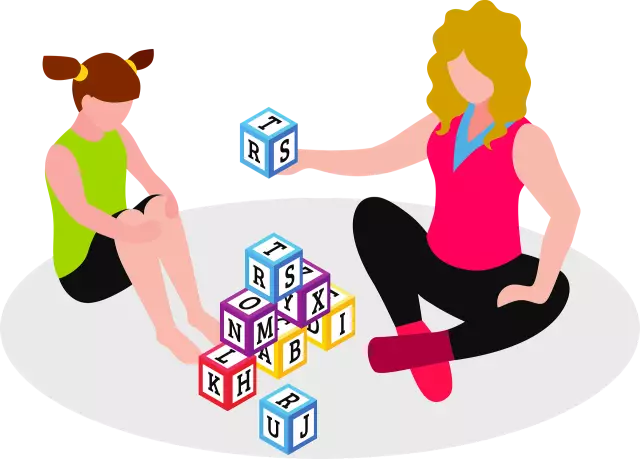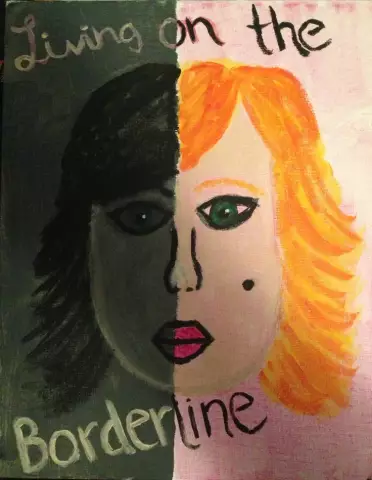- Author Rachel Wainwright [email protected].
- Public 2023-12-15 07:39.
- Last modified 2025-11-02 20:14.
Animal therapy and its types

Animal therapy, or zootherapy, is the treatment of diseases through communication with animals. It's hard to tell if this is a new method or an old one. As a separate direction of medicine, animal-assisted therapy took shape only in the last few decades, and therefore can be considered one of the newest methods of treatment, on the other hand, the fact that communication with animals has a healing effect on a person was known throughout human history. The ancient Greek god of healing, Asclepius, was portrayed with a companion - a dog that licked people's wounds. But even without a digression into history, everyone, without exception, knows how beneficial communication with a pet has on the nerves, and isn't all diseases from the nerves?
There are probably as many types of animal therapy as there are animal species. But there are a few generally accepted directions that are currently best studied and are practiced everywhere. It is not surprising that it was best to study those animals that since ancient times have shared his life with man.
Feline therapy
Feline therapy is a treatment for cats. Cats in the role of doctors are widely known and popular all over the world. Who does not know that cats have great intuition and feel the slightest deviations in the state of health not only of their owner, but also of other people?
There is a theory that the purring of a cat at a certain frequency causes an increase in recovery processes in damaged tissues, and so far this theory has not been refuted. Bioenergy supporters talk about the unprecedented power of the feline biofield, which is beneficial for everything that is in its zone of action, with the exception, apparently, of mice. True, representatives of official medicine say that the matter is not in the frequency of purring and biofield, but in the beneficial effect of the cat itself, which creates a positive attitude, and this, in turn, has a beneficial effect on the immune processes in the body. Be that as it may, but the fact remains - the presence of cats stimulates immunity.
A cat, like no one else, knows how to relieve nervous tension, and therefore feline therapy is indicated in the treatment of nervous and mental diseases, as well as diseases of the cardiovascular system.
Another amazing ability of cats is to act as an anti-inflammatory and pain reliever. The mechanism of action of the "drug" is as follows: cats accurately identify a sore spot in the human body and fit on it, and after a while the pain subsides. While it is difficult to say what is the matter, but while scientists understand the reasons, feline therapists successfully treat many diseases and help to recover from them.
Kanistherapy
Canistherapy - treatment with dogs. The dog is not just a friend of man, it is also his doctor. Dogs, no less than cats, help a person to put in order the nervous system, they are sociable, playful and benevolent, and these qualities are used with great success in the treatment of children with congenital nervous pathology, ranging from cerebral palsy to mental retardation.
Dogs by their presence are not only soothing, they help to concentrate. It has long been observed that mental activity in the presence of dogs is activated, and this observation is fully confirmed in the practice of teaching children with mental and mental disabilities: children with Down syndrome in the presence of dogs learn better.
Guide dogs for blind people, rescue dogs, helping to find and dig up people covered by snow or drowning are widely known. In addition, the dog is a reliable "nurse" for people with epilepsy. As you know, an epileptic seizure can take a person by surprise at any time - in transport, on the street, etc., which is the cause of quite frequent accidents, from bruises and fractures as a result of a fall, to an emergency on the roads. Dogs have the ability to sense the approach of an epileptic seizure 15-20 minutes before its onset, warning the person about it. Cases have been known of dogs exposing themselves to a falling person during the onset of an attack to soften the fall.
Well, a fact confirming the wisdom of Asclepius: dog saliva contains the enzyme lysozyme, an antibacterial substance that is active against most microorganisms. The content of lysozyme in the saliva of dogs is so high that it was previously obtained for medical purposes precisely by processing canine saliva.
Hippotherapy
Another effective method of non-drug therapy is horse treatment, or hippotherapy. Hippotherapy is also used in the complex treatment of children with mental and mental disabilities. In addition, the method is very effective for motor disorders, spastic conditions and other disorders of the musculoskeletal system, since both caring for horses and horse riding involve different muscle groups, having a beneficial effect on their function. In the process of riding, the respiratory and circulatory systems are trained, memory, concentration and mental activity are stimulated. Such a complex effect is shown in the treatment of cerebrovascular accidents, epilepsy, cerebral palsy, the consequences of traumatic brain injury.
There is also an important point: communication with horses gives special children confidence in themselves and their strengths. When a person sees that he is capable of caring for such a large and strong animal by his actions and affection, achieving the necessary actions for himself, this contributes to establishing contacts with other representatives of the world around him.
Dolphin therapy
Today it is one of the most exotic, but at the same time one of the most popular areas of animal therapy. Dolphins are cheerful and playful, playing, they emit clicking sounds, which are nothing more than ultrasound of various frequencies, and scientists associate the therapeutic effect of dolphin therapy mainly with it. Dolphins can use ultrasound to relieve pain and soothe.
The effectiveness of dolphin therapy has been proven in the treatment of many diseases of the nervous system: disorders of articulation and memory, including post-stroke and post-traumatic disorders, reactive psychoses, depression, as well as nervous and mental pathologies of childhood, such as cerebral palsy, Down syndrome, hyperreactivity, autism, deficiency syndrome attention, developmental delays of various etiologies. The behavior of dolphins is very reasonable, despite their natural playfulness and mobility, they behave differently with sick people than with healthy ones, more cautious and sensitive. In the course of the practice, dolphin therapists noticed that after communicating with a sick person, the dolphin needs some time to recover: after completing the therapy session, the dolphin tries to swim away from people and be alone and alone for a while. Based on this, it is quite possiblethat dolphins heal people consciously, generously sharing their energy and strength with them.
Found a mistake in the text? Select it and press Ctrl + Enter.






